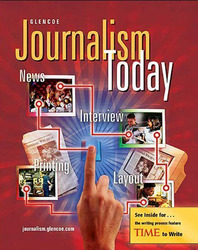Journalism TodayChapter 8:
Handling Quotes Fairly and AccuratelyActivity Lesson PlansIntroduction
Reproducing accurately what people say is a basic journalistic function. In this activity students will read "Delusions of Accuracy" by Ariel Hart, which may help to explain the statement: "100-percent accuracy is a goal, a place to start." Then students will answer questions related to the article. Lesson Description
In this activity students will explore the ideal of accuracy in journalistic writing. Instructional Objectives
- Students will be able to recall the content of the article.
- Students will be able to form their own opinion regarding mistakes in journalism.
- Students will be able to evaluate the credibility of a piece of journalism and its author.
- Students will be more comfortable fixing errors in their own work.
Student Web Activity Answers
- Possible answer: According to the author, journalists make mistakes in every piece they write.
- Answer: The author does not give the name of the Pulitzer Prize-winning writer who wrote the most mistake-ridden article he has ever checked. He does, however, cite the author of the most accurate article that he has ever checked: Jeffrey S. Klein, a former Los Angeles Times lawyer.
- Possible answer: Yes. The author states that he has three years' experience as a freelance fact checker at the Columbia Journalism Review ; therefore he is aware of the number of mistakes made by journalists at that publication. While, according to his article, his experience is limited, he quotes a senior editor from The Atlantic Monthly and an interview on WNYC radio to back up that limited experience.
- Possible answer: Student answers will vary.
GO TO STUDENT ACTIVITY  | 




